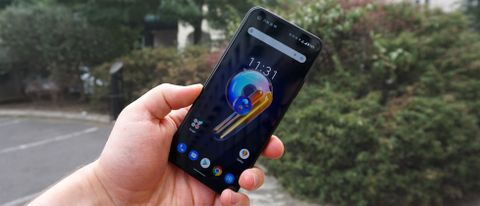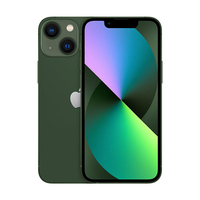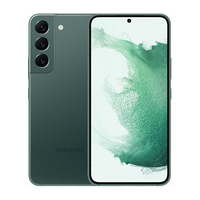TechRadar Verdict
The Asus Zenfone 9 has a lot to like, but it’s ultimately disappointing. It has an easy-to-use small form factor and 3.5mm headphone jack, but its screen is too small to justify the powerful processor, the camera experience is mixed and the price is just too high for what you’re getting.
Pros
- +
Easy to use one-handed
- +
Neat navigation tricks
- +
3.5mm headphone jack
Cons
- -
Price too high
- -
Only two rear cameras
- -
Unnecessarily high-end specs
Why you can trust TechRadar
Two-minute review
It took a week of testing for this Asus Zenfone 9 review before we realized that our struggles to ‘get’ this phone stemmed from the device’s own identity issues.
The Zenfone 9 is a cheap phone playing dress-up as a premium one; it’s two middling phones standing on each others’ shoulders in a trench coat and pretending that they’re comparable to the Samsung Galaxy S22 or iPhone 14.
The phone simply shouldn’t cost as much as it does. Asus has given it a similar price to flagships from Samsung and Apple as well as the Xiaomi 12 and OnePlus 10 Pro, but the user experience just doesn’t justify this cost.
That’s most evident in the camera - there’s a 50MP main and 12MP ultra-wide, but no third lens like Samsung’s telephoto or Xiaomi’s telemacro in their respective flagships. This means the photography experience is more limited than it is in other phones at this price.
The chip is also an issue. Asus packs in the top-end Snapdragon 8 Plus Gen 1, which is great for things like gaming or video editing - in theory.
However, one of the Zenfone’s key features is its small size - that makes it easy to use one-handed, and truly pocket-sized… but when the display is this small, who’s going to be buying the phone for gaming anyway? The chip just doesn’t make any sense, and the phone would have been better off using a mid-range processor.
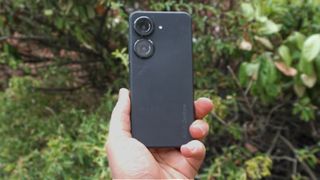
The phone is just ‘fine’ in many other aspects too - a statement that wouldn’t be as scathing if it wasn’t for the price. The battery life is fine, the display is fine, the front camera is fine. Fine, fine, fine - but not great.
This is a shame because on the surface, there are things to like about the phone. Its small form factor is fantastic for people who find modern phones too big, as you can easily reach all parts of the phone’s display, and pocket the device without trouble.
Too few brands are making small phones these days - possibly because too few people are buying them but there’s definitely a vocal audience for compact devices like this.
The phone also has some neat navigation tricks. You can double-tap the back of the phone or swipe up or down on the power button and you can map these shortcuts to certain tasks.
Plus, the phone has a 3.5mm headphone jack - how many premium phones have one of those nowadays? Not many!
With these pleasing features in mind, it’s hard not to be disappointed that the Asus Zenfone 9 has so many rough edges.
It’s not competitive in terms of price or specs and that makes it very hard to recommend, but people who desperately want a small phone might look past those issues - or consider waiting for the Asus Zenfone 10, which might fix them when it launches, probably around mid-2023.
Asus Zenfone 9 price and availability
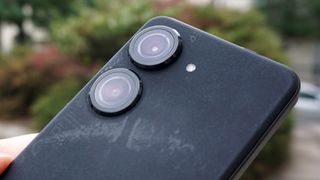
The Asus Zenfone 9 costs $699 / £699 / AU$1,199 for the 8GB of RAM and 128GB of storage model, and $799 / £749 (around AU$1,300) for 16GB/256GB.
For context, the Samsung Galaxy S22 starts at $799 / £769 / AU$1,249 and the base iPhone 14 goes for $799 / £849 / AU$1,399, and Asus fits into the same rough price category as them which makes comparisons natural, though it slightly undercuts both.
However, it costs a lot more than the $599 / £599 / AU$999 Google Pixel 7, which is a newer and higher profile - if slightly less powerful - phone.
The iPhone 13 mini is a worthwhile comparison point too, as it's a bit older but similarly powerful and compact, and starts at $599 / £649 / AU$1,049, so it's slightly cheaper despite coming from Apple.
The Zenfone 9 launched at the end of July 2022 - quite late compared to the May 2021 launch date of the Zenfone 8, and it didn't land in the US or Australia until even later.
- Value score: 2.5/5
Asus Zenfone 9 design
The Asus Zenfone 9 would look like a by-the-numbers ‘chocolate-bar’ style smartphone if it wasn’t quite petite - it’s smaller than most other Android phones on the market.
This makes it very comfortable to use with one hand, at least compared to some of the other mega-mobiles you get at the same price.
The phone has a USB-C port, as well as the 3.5mm headphone jack - wired audio fans will be impressed. On the right edge, there’s a volume rocker and side-mounted fingerprint scanner - this is fairly quick and easy to use, working 9 times out of 10, which is better than some phones.
One distinctive feature is the massive rear camera array, with each of the two lenses getting its own huge circular bump.

The Zenfone isn’t clad in glass, like many similar-priced phones, but instead has a plastic case. However, it feels hardy and has a textured grip so it’s easy to hold. It comes in four colors - we tested the black one, but there’s also red, blue and white.
The phone has an IP68 rating against water and dust, so it should survive a drop in water or in the dirt.
- Design score: 3.5/5
Asus Zenfone 9 display
Like we said, the Asus Zenfone 9 is small - its display clocks in at 5.9 inches, making it one of the only Android phones launched in 2022 with a screen size below 6 inches.
Specs-wise, it has a FHD+ display, 1100nits max brightness and 120Hz refresh rate - that’s more or less what you’d expect for the price, though there are a few handsets at this price with a higher resolution.
We called the display ‘fine’ before, and it’s hard to think of a more descriptive word than that. It does what you need it to, with a resolution that matches most apps’ outputs and a refresh rate that makes motion look smooth, but it doesn’t do anything better than any other phone.
- Display score: 3.5/5
Asus Zenfone 9 cameras
With two rear cameras, the Asus Zenfone 9 just can’t compete with many similarly-priced phones.
The main snapper is a 50MP one using the Sony IMX766 sensor - we’ve previously been impressed by the low-light capabilities of this component, and it performs well here.
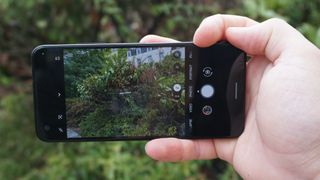
If we have a slight issue, it’s that some images looked flat, while others looked oversaturated and too vibrant - it seems the AI processing can get confused.
The other camera is a 12MP ultra-wide snapper with a 113-degree field of view. This works about as well as most shorter-focal-length lenses do, with minimal (though sometimes apparent) edge distortion.
There’s no zoom camera, despite many same-price rivals having one, which means that if you want to get closer to a subject, you have to use digital zoom or cropping. This rarely looks great and quickly results in grainy images if you zoom too far.
However, the biggest issue with the camera is that it often took a while to actually capture an image after pressing the shutter button. We took many blurry shots while lowering the phone before we noticed this issue, so make sure your photo has actually been taken before you move your hand.
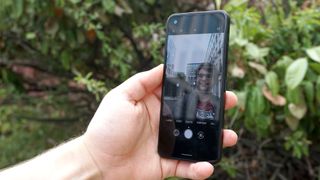
It's not clear if this is a bug, or whether the phone has a startlingly slow shutter speed, but we're assuming it's the former.
On the front, there’s a 12MP selfie camera and this performed fine, taking pictures with sufficient detail and light. It performed pretty well in low-light conditions too, though Portrait mode brought quite a bit of inaccurate artificial background blur.
When it comes to video, the phone supports recording of up to 4K and 60fps, which many phones support, but we were pleasantly surprised to see a Pro Video mode, something only a select few devices have.
This is like Pro Photo, but lets you change the shutter speed, ISO, white balance and more for video recording, giving you lots of versatility in the movies you shoot.
There are a few other modes beyond that but nothing unique; staples like light trails, slow-mo, panorama and time-lapse are all available here.
- Design score: 3/5
Camera samples






Asus Zenfone 9 performance and specs
When we heard about the Asus Zenfone 9’s processor, shortly after hearing about its screen size, we couldn’t help but ask “why?”.
The handset uses Qualcomm’s Snapdragon 8 Plus Gen 1 chipset. This is the most powerful chip Android phones are using right now, which really lends itself to intensive processes like gaming or video editing… but it doesn’t really matter here.
With a 5.9-inch screen, you’re not buying the Zenfone for gaming. Sure, it’s powerful, but there’s just not enough useful screen space - when you’ve got your hands in position you’re basically covering half of the screen and can barely see any of the action. Similarly, the screen makes editing video too imprecise to be worth it.
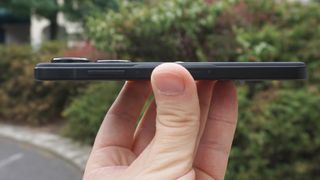
So the power is unnecessary; there’s also the issue that Qualcomm’s 8-series chipsets overheat easily, even when you’re not doing an intensive process.
It would’ve been better for the phone to have one of Qualcomm’s 7-series chipsets, which provide enough power for most circumstances, and don’t turn into infernos at the drop of a hat.
The phone also has a 16GB RAM option, which is ludicrous even on Samsung Galaxy S22 Ultra-sized giants, let alone on this toddler of a mobile. That’s paired with 256GB storage, though you might find the 8GB/128GB version is good enough for you.
- Performance score: 4.5/5
Asus Zenfone 9 software
The Asus Zenfone 9 uses stock Android 12 without many Asus tweaks to it, so you have a nice clean experience with Google’s baked-in apps and the customization benefits of this version of Android.
There are two changes we noticed from stock Android. The first one is basic, and it’s that the default wallpaper is an Asus one, instead of one of Android’s options. The second is a gaming mode that pops up when you play a game, letting you fiddle with settings and mute notifications.
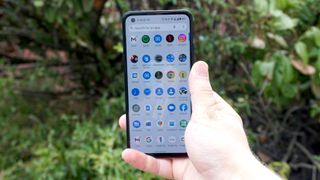
As mentioned above, Asus has introduced two cool navigation options to get you around the phone with ease. One is the ability to double-tap twice on the back of the phone, and the other is to swipe up or down on the side-mounted fingerprint scanner.
You can map these tools, meaning you can choose what they do. We used the swipe for the Notification Shade and the double-tap for opening the camera. However, we soon disabled the double-tap, as it would repeatedly trigger it in our pocket. The scanner swipe is useful though.
- Software score: 4/5
Asus Zenfone 9 battery life
While the Zenfone’s 4,300mAh battery would seem on the small side for most phones, thanks to its petite display that’s not really an issue here.
That doesn’t mean the Asus’ battery life is good, it’s decidedly average. The phone lasted for a full day of use most of the time, and only struggled through intensive use - saying that, it couldn’t be counted on to last into a second day.
That’s basically average for a smartphone but Asus claimed in our briefing that the phone would last for “1.9 days,” which is clearly not true.
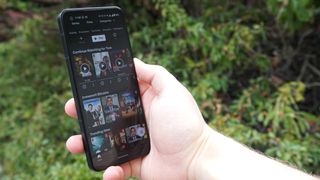
Charging happens at 30W, which is admittedly a little on the slow side for a flagship phone, but Apple and Samsung haven’t really embraced fast charging either so we can’t be too miffed. That does mean this is an overnight-charging phone though.
Asus has a few battery health features to ensure you don’t overcharge too much, including one that lets you set the time the phone should be fully powered by each morning. Techniques like this ensure the phone will last longer before the battery health falls away.
- Battery score: 3/5
Asus Zenfone 9 score card
| Attributes | Notes | Rating |
|---|---|---|
| Design | The Zenfone 9 has a cute compact frame, but it's not exactly a looker. | 3.5/5 |
| Display | The Asus' display specs are fine for the price, though you can get more for your money. | 3.5/5 |
| Performance | While its power is unnecessary for the size, it's undeniable that this is a powerful phone. | 4.5/5 |
| Camera | With only two rear cameras, the Asus doesn't have the best photoraphy chops, especially with its buggy software. | 3/5 |
| Battery | The Zenfone lasts for about a day of use between charges, and charges at a medium speed. | 3/5 |
| Software | With stock Android, the Asus has a nice clean software experience with little bloatware. | 4/5 |
| Value | The Asus Zenfone 9 just doesn't offer you value for money, given its high price and middling feature set. | 2.5/5 |
Should I buy the Asus Zenfone 9?
Buy it if...
You want a small phone
You don’t get many compact phones nowadays, but if you want one that’s easy to grip, the Zenfone is worth considering.
Navigation tools sound impressive
The Zenfone’s quick navigation tools should help some people who learn how to do them naturally.
You like your wired audio.
The Asus Zenfone 9 is one of the only premium phones we’ve seen with a 3.5mm headphone jack, so if you’re a fan of wired headphones, this could be a good choice for you.
Don't buy it if...
You’re on a budget
This is quite an expensive phone for what it is, so if you’re looking to save money, it’s not one worth considering.
You’re a mobile gamer
5.9 inches of screen space just isn’t enough to let you enjoy your game, no matter how powerful the chipset is.
You’re a photography fan
With only two rear cameras - and one of them being an ultra-wide - the Asus Zenfone isn’t as good at photography as many other phones at this price.
Also consider
iPhone 13 mini
If you’re looking for a small phone, Apple has an option for you in the iPhone 13 mini, which is smaller than the Zenfone and costs less too. This isn't one of Apple's very latest phones but it still has the specs to compete with the Asus.
Check out our iPhone 13 mini review
Samsung Galaxy S22
For around the same price as the Zenfone 9, you can get Samsung’s latest flagship with a more fleshed-out camera array and a bigger display.
Check out our Samsung Galaxy S22 review
Asus ROG Phone 6
If you want an Asus phone, and also like gaming, you should know that it makes gaming phones too. The ROG Phone 6 has a big screen and multiple USB ports.
Check out our Asus ROG Phone 6 review
- First reviewed July 2022

Tom Bedford was deputy phones editor on TechRadar until late 2022, having worked his way up from staff writer. Though he specialized in phones and tablets, he also took on other tech like electric scooters, smartwatches, fitness, mobile gaming and more. He is based in London, UK and now works for the entertainment site What To Watch.
He graduated in American Literature and Creative Writing from the University of East Anglia. Prior to working on TechRadar, he freelanced in tech, gaming and entertainment, and also spent many years working as a mixologist.

I experienced Dolby Atmos music in a Cadillac OPTIQ, and now I want to drive in an immersive audio bubble

TCL's ultra-affordable 60XE uses NXTpaper to potentially break all kinds of battery life records

BlackBerry and Microsoft are collaborating on something big, but it has nothing to do with smartphones
